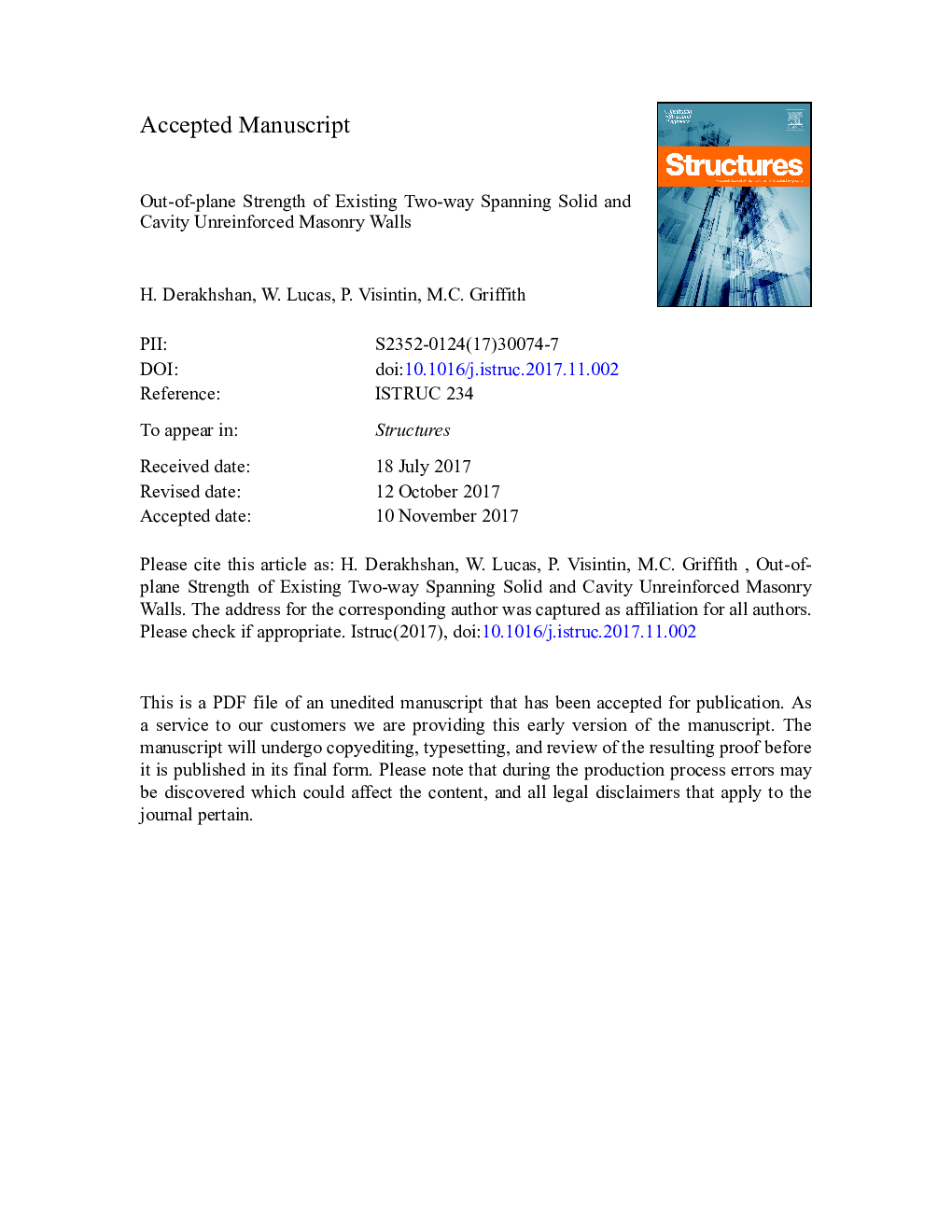| Article ID | Journal | Published Year | Pages | File Type |
|---|---|---|---|---|
| 6774560 | Structures | 2018 | 36 Pages |
Abstract
An in-situ unreinforced masonry (URM) wall testing programme was conducted to study the effects of as-built wall boundary conditions on its out-of-plane strength. In total, eight pressure-controlled quasi-static airbag tests were done on 4 double-leaf cavity walls and 4 single-leaf solid walls, followed by relevant material testing. The walls were located in two 1960s URM properties in Adelaide, South Australia and had in-situ boundary conditions and construction details. Several walls included door openings at one edge and/or connected to flexible ceilings at top. Other as-built details included plaster finish on some of the internal walls and on the inner leaf of some of the external cavity walls. Additionally, the cavity walls had as-built wall ties that were damaged during construction and had irregular spacing. The main contributions of this study are to highlight the effects of these in-situ details, to make a comparison between strength predictions using an energy-based, virtual work method and an equilibrium-based method, and to improve the virtual work method for evaluation of the walls that have plaster finish. The calculations indicate that the improved virtual work method can be used to obtain a safe, lower bound, estimate of the wall strength.
Related Topics
Physical Sciences and Engineering
Engineering
Civil and Structural Engineering
Authors
H. Derakhshan, W. Lucas, P. Visintin, M.C. Griffith,
